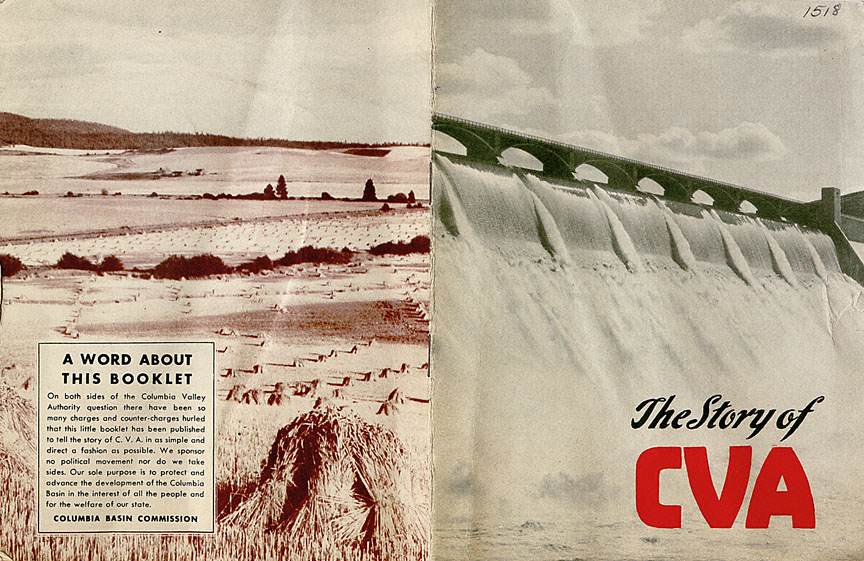- Catalog No. —
- Mss 1518
- Date —
- ca. 1950
- Era —
- 1921-1949 (Great Depression and World War II), 1950-1980 (New Economy, Civil Rights, and Environmentalism)
- Themes —
- Government, Law, and Politics
- Credits —
- Oregon Historical Society
- Regions —
- Central Columbia River
- Author —
- Columbia Basin Commission
The Story of the CVA
The Columbia Basin Commission (CBC), a Washington State organization, produced this booklet about the Columbia Valley Administration (CVA) to “protect and advance the development of the Columbia Basin in the interest of all the people and the welfare of our state.” Washington State officials originally created the CBC in 1933 to promote dam and reclamation projects.
Beginning in the 1930s, Congress considered a number of proposals to create a governmental organization that would regionally coordinate the development of natural resources in the Columbia River Basin, including dam building, irrigation, hydro-electricity, and forestry. The Columbia River Basin, which spans into Canada, includes portions of three states: Washington, Idaho, and Oregon. Despite the support of Presidents Franklin D. Roosevelt and Harry S. Truman, the CVA proposal died in the early 1950s after more than a dozen failed congressional bills.
While supporters of the CVA emphasized regional control, opponents feared it would give the federal government too much power. One notable opponent was Douglas McKay, Oregon’s governor from 1949 to 1953. McKay, who became the U.S. Secretary of the Interior in 1952, argued that the CVA would give the federal government ownership over Oregon’s resources.
Further Reading:
Lang, William L. “Failed Federalism: The Columbia Valley Authority and Regionalism.” In The Great Northwest: The Search for Regional Identity, ed. William G. Robbins. Corvallis, Oreg., 2001.
Mahar, Franklyn D. “The Politics of Power: The Oregon Test for Partnership.” Pacific Northwest Quarterly 65, 1974: 29-37.
Written by Kathy Tucker, © Oregon Historical Society, 2002.
